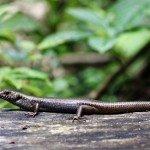
Image: NASA
Scientists have mapped over 5000 craters on the moon’s surface, which provide new clues to the planetary bombardment in our solar system 4 billion years ago.
The craters on the moon demonstrate that it has withstood impacts from comets, asteroids and other space matter throughout its history. A team led by Brown University geologists have now mapped these craters with the aim of shedding light on the early life of the inner solar system.
Using the Lunar Orbiter Laser Altimeter, located onboard NASA’s Lunar Reconnaissance Orbiter, scientists have mapped 5185 craters, all 20km in diameter or larger. A count and analysis of the craters has revealed the oldest regions of the moon are located on the southern near side and the north-central far side, with the South Pole-Aitken basin acknowledged as the oldest basin on the moon.
An understanding of the location and dimension of the craters according to age has provided new insight into our solar system’s early life. Scientists have believed for years that the moon was bombarded by space matter that had a steady ration between “˜large and small’. However, the size-frequency distribution was challenged in 2005 by a team led by University of Arizona geologist Robert Strom, who suggested that the size ratio had changed during the moon’s lifetime.
The Brown University research adds credence to this hypothesis. A study of the oldest surfaces of the moon showed that these had been impacted by a greater ratio of larger projectiles. This is believed to have changed to a greater ratio of small projectiles after 3.8 billion years ago, which suggests a change to the forcing of the asteroid belt.
This is suggested to have been caused by the gravitational pull of the gas giants, Jupiter and Saturn, as they settled into their orbits, an unexplained change in the nature of the asteroid belt, an abundance of comets during this period or an unknown factor.
These findings provide a clue to the conditions during the solar system’s infancy and will assist scientists in reconstructing this period.
Watch the video below for a neat explanation of the project from NASA.
[Brown University via Science Daily]






